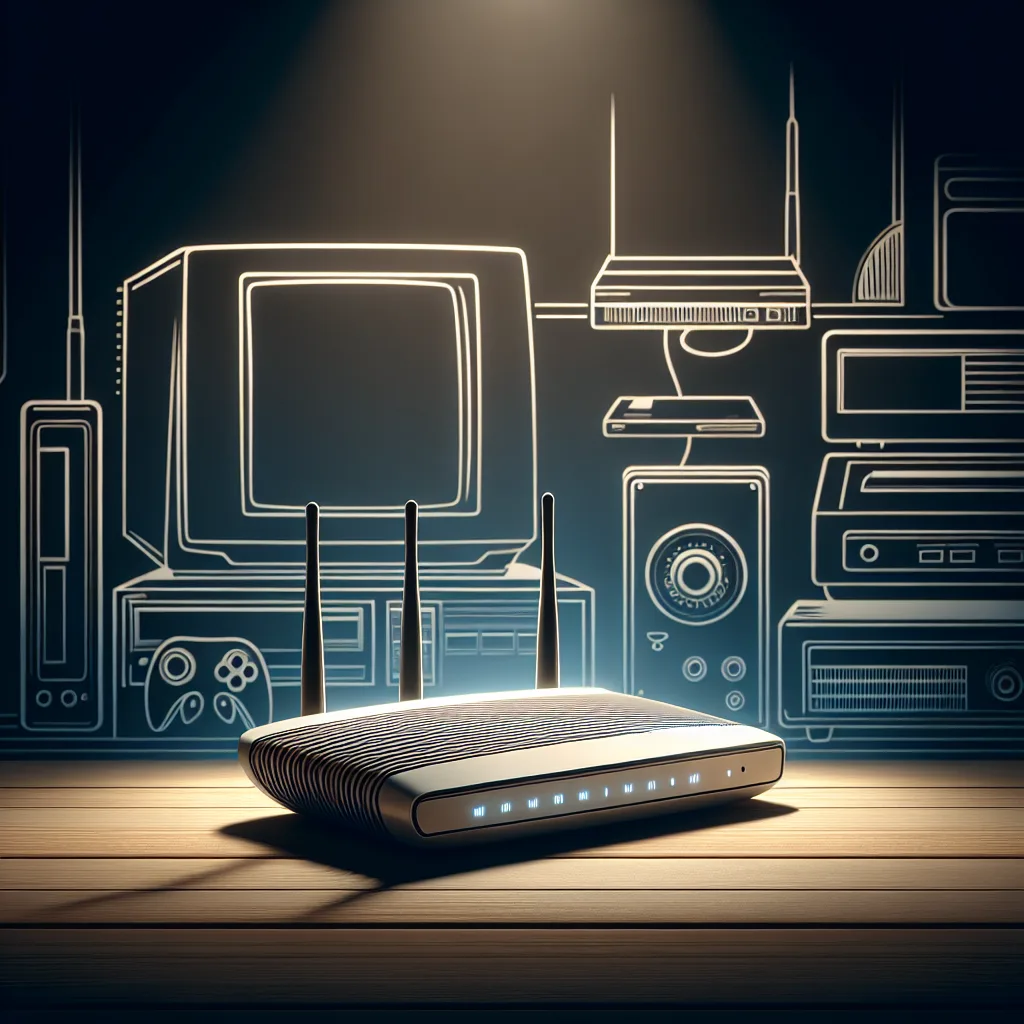A personal look at a home network built over years to support a collection of vintage computers, game consoles, and other retro tech. It’s a fun project!
My home network is a bit of a Frankenstein’s monster.
It didn’t start this way, of course. Years ago, it was just a simple router blinking away in a corner, doing its job without any fuss. But over time, as my hobbies grew, so did the network. It spread and evolved, slowly turning into the complex web it is today.
And what’s the hobby that demanded all this? I collect and restore vintage tech. I’m talking old computers, game consoles, handhelds, phones—you name it. And I don’t just let them sit on a shelf. I actively use them. This created a fascinating problem: How do you get a 40-year-old computer to talk to a modern, secure internet?
That’s what my network is built for. It’s a bridge between eras.
It All Started with a Simple Goal
The whole thing began with a simple desire. I wanted to be able to download files from the internet directly onto my vintage machines. No more shuffling files around with floppy disks or weird adapters if I could help it. I wanted my Commodore 64, my old PowerPC Macs, and my classic game consoles to feel like first-class citizens in my home.
This meant they needed a stable, friendly connection. The problem is, the security protocols on a brand-new iPhone are worlds away from what an old machine from the 90s can handle. Putting them all on the same Wi-Fi network felt like a bad idea. I needed a way to keep my modern, important stuff—like my work laptop and personal phone—separate from the old-timers.
How It’s All Connected
So, how did I solve this? I split my network into pieces. Think of it like having different zones in your house. You have the super-secure area for sensitive stuff, a general area for everyday things, and a workshop for your experimental projects.
My network works the same way:
- The Main Network: This is for my trusted devices. My partner and I use this for our laptops, phones, and the main TV. It’s fast, secure, and completely walled off from everything else.
- The “Internet of Things” Network: I have another, separate network just for all those random smart devices. Things like smart plugs, a thermostat, and a few security cameras. These devices are useful, but I don’t fully trust their security, so they live on their own island where they can’t cause any trouble for my main devices.
- The Retro Lab: This is where the magic happens. It’s a dedicated Wi-Fi and wired network specifically for my vintage collection. It’s designed to be as compatible as possible with old technology. It uses older, more basic security that a 20-year-old laptop can actually understand. This is the playground.
The “brain” of this whole operation is a powerful router that can manage all these separate networks, making sure traffic from the retro lab can’t just wander over into my main, secure network.
The Real Fun: Making It All Work
Building this setup has been a slow and rewarding process. It’s been a puzzle, piecing it together one device at a time. I have a central home server that acts like a digital library for my old machines. It stores old software, game ROMs (for emulation), and digital copies of instruction manuals.
So now, I can sit down at my 25-year-old Macintosh, connect to the retro network, and pull a file from the server just as easily as I would on my modern PC. I can use my collection of old handhelds to browse simple, text-based versions of websites that I host locally.
It’s less about efficiency and more about the experience. There’s something deeply satisfying about seeing a piece of ancient technology do something it was never designed to do. Each new device I get online feels like a small victory.
Was It Overkill? Absolutely. Was It Worth It? Yes.
I’m sure some people would look at a diagram of my network and think it’s complete overkill. And they’d be right. Most people don’t need this. A single, simple network is perfectly fine.
But for me, building this system has become part of the hobby itself. It’s a project that’s never truly finished. It’s a testament to years of collecting, tinkering, and problem-solving. It’s the invisible backbone that brings my entire collection of tech history to life.
And honestly, it’s just plain fun.
